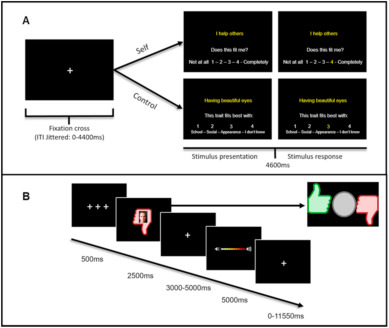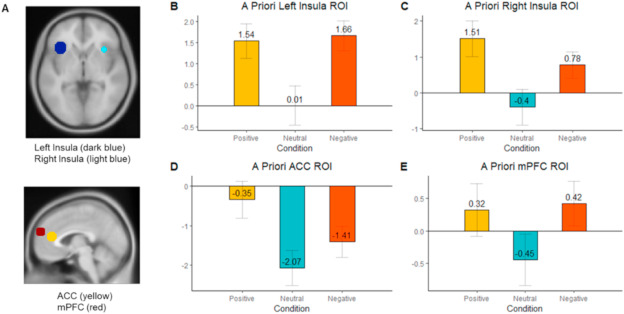Overlapping and distinct neural correlates of self-evaluations and self-regulation from the perspective of self and others
Description
Overlapping and distinct neural correlates of self-evaluations and self-regulation from the perspective of self and others
Prior research has implicated the medial and lateral prefrontal cortex (PFC) in processing evaluations from the perspective of self (self-traits) and evaluations from others (peer feedback), suggesting that these areas form a neural substrate that serves an intertwined function in monitoring self in relation to others. To test this possibility, we examined neural activation overlap in medial and lateral PFC after processing self- and other-informed evaluations. Young adults (age range 18–30-yrs, n = 40) performed two fMRI tasks. The self-concept task involved rating whether positive and negative traits described themselves. The Social Network Aggression Task involved processing positive, neutral or negative feedback from others, with the possibility to retaliate by blasting a loud noise following feedback. The results show that rating positive self traits and receiving positive peer feedback was associated with increased activity in an overlapping region in medial PFC. There were no significant correlations on a behavioral level and medial PFC activity for self-versus-other evaluations. The study further replicated the finding from previous research showing that higher activity in dorsolateral PFC (dlPFC) when receiving negative social feedback was associated with reduced noise blast aggression. Finally, during retaliatory responses after receiving positive feedback, participants showed increased activity in the dlPFC. Together these findings suggest that medial PFC is more strongly involved in protecting positive self-views from both internal (self traits) and external (peer feedback) points of view, whereas dlPFC is more strongly involved in regulating retaliatory responses following social rejection, and actively inhibiting aggressive behavior after receiving positive peer feedback.






